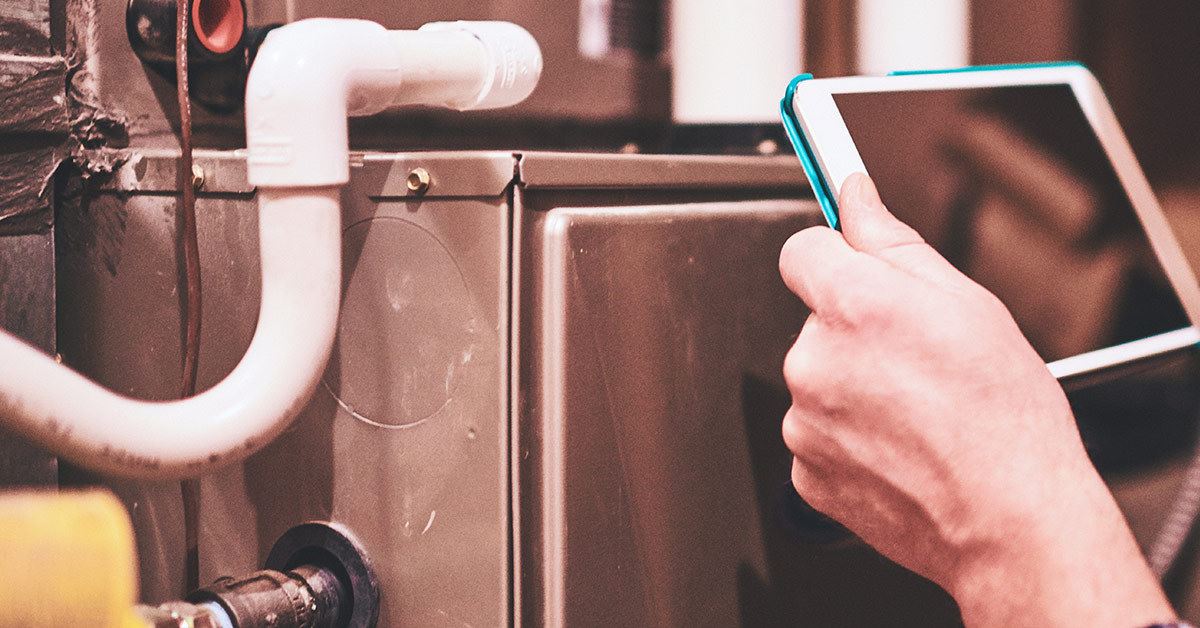Should You Replace a Furnace and AC at the Same Time?
It’s official. Your AC has breathed its last, so to speak, in the Texas heat. Now the unit has to be replaced. But that begs a string of questions – should you replace the furnace while you’re at it? How much is a new furnace and AC in Austin, TX? Can you save money replacing both together?
We recognize making changes to your HVAC system is a big decision. That’s why we put together this information to help you decide when it makes sense to replace your furnace and AC at the same time.
How Does a Furnace Work with an AC Unit?
Although a furnace and an AC unit might appear to serve completely opposite functions, they work together seamlessly to maintain a comfortable indoor environment throughout the year. By understanding how these systems interact, you can better appreciate the intricacies of your home's heating and cooling setup.
The integration of the furnace and the AC unit relies on several key components working together:
- Shared Fan: Both the furnace and the AC unit use the same fan to circulate air through the ductwork. This fan ensures that heated or cooled air is evenly distributed throughout your home.
- Evaporator Coil: Located within the furnace's air handler, the AC unit's evaporator coil absorbs heat and humidity from the indoor air. This heat is then transferred outside, and the cooled air is blown through the ducts.
- Thermostat: Serving as the control center, the thermostat monitors the indoor temperature and activates either the furnace or the AC unit to maintain the desired temperature.

During the summer, the AC unit's evaporator coil is crucial. It absorbs heat and humidity from the air inside your home, which is then expelled outside via the refrigerant. The cooled and dehumidified air is circulated by the shared fan, effectively lowering the indoor temperature and creating a comfortable atmosphere.
In the winter, the furnace heats air by burning fuel (such as natural gas, oil, or propane) or using electricity. Once the air is heated, the same fan circulates it through the ductwork, distributing warmth throughout your home. This efficient use of a shared fan and duct system means that, regardless of the season, your home maintains a stable and comfortable temperature.
The thermostat's role is pivotal in this process. By monitoring the indoor temperature and automatically activating the appropriate system, the thermostat ensures your home remains cozy in the winter and cool in the summer without the need for constant manual adjustments.
While a furnace and an AC unit have distinct functions, their integration within a shared system allows them to work in harmony. This collaboration not only maximizes comfort but also enhances the efficiency of your home's heating and cooling processes.
Do You Need to Replace a Furnace and AC Unit?
While your heating and cooling units work together to keep your home comfortable, they are not necessarily inseparable. It's possible to replace one without the other, but there are several factors to consider before making a decision.
Here are some important questions to think about when replacing your furnace or AC unit:
- Compatibility: Ensure that the new AC unit is compatible with your existing furnace. If the new AC is similar to your old one, it will likely work well with the furnace. Both systems share components like the fan to distribute air throughout your home, so compatibility is essential for optimal performance.
- Age of the Furnace: AC units typically have a lifespan of 10 to 15 years, while furnaces can last 20 to 30 years. If your furnace is over 15 years old, it may be more cost-effective to replace both units simultaneously. This way, you ensure that the new systems are designed to work together efficiently and reduce the likelihood of future compatibility issues.
- Efficiency Matching: Check the Seasonal Energy Efficiency Ratio (SEER) ratings of your furnace and AC unit. If both units have a SEER rating above 16, you can maximize energy savings and reduce utility costs. However, if one unit has a higher rating than the other, the overall system's efficiency will be compromised. Matching the efficiency levels of both units can lead to significant long-term savings.

There are also scenarios where you might decide not to replace both units at the same time. For instance, if your furnace is under 10 years old, it likely has many years of useful life remaining. In this case, replacing just the AC unit might be the most economical choice. Since you will probably need to replace the AC again before the furnace, staggering the replacements can help manage costs over time.
While it's possible to replace just one unit, carefully evaluating the compatibility, age, and efficiency of your existing systems is crucial. Making an informed decision will ensure that your home remains comfortable and energy-efficient, saving you money in the long run.
Is it Cheaper to Replace a Furnace and AC Together?
Simply put, yes. Replacing both your furnace and AC unit at the same time can be more cost-effective than doing so separately. Here are several reasons why this approach can save you money:
- Prorated Pricing: When you purchase a combined unit, manufacturers and installers often offer prorated pricing. This means you'll get a discount for buying both units together compared to purchasing each one separately.
- Reduced Installation Costs: In Travis County, TX, for example, the cost of installing both units together is typically about half of what it would be if you installed them individually. This is because labor costs are consolidated, and the process is more streamlined when technicians can handle both units simultaneously.
- Efficiency Savings: Upgrading both systems at once allows you to choose a matching, energy-efficient pair. Modern, high-efficiency units can significantly reduce your energy bills. Systems with a SEER (Seasonal Energy Efficiency Ratio) rating of 16 or higher are particularly effective at lowering energy consumption.
- Lower Repair Costs: New systems are less likely to require frequent repairs compared to older ones. By replacing both units at once, you minimize the chances of unexpected breakdowns and the associated repair costs. This can lead to long-term savings and peace of mind.
- Enhanced Compatibility: Replacing both units together ensures they are designed to work seamlessly with each other. This can improve overall system performance and longevity, reducing the likelihood of compatibility issues that can arise when pairing a new unit with an older one.
The overall cost of updating both your furnace and AC together can range between $6,000 and $9,000, depending on the specific units you choose. While this might seem like a significant investment, the combined savings on installation, energy, and repairs can make it a financially sound decision in the long run.
Replacing both your furnace and AC at the same time is generally cheaper and more efficient. The benefits of prorated pricing, reduced installation costs, improved energy efficiency, lower repair costs, and enhanced system compatibility make it a smart choice for homeowners looking to upgrade their heating and cooling systems.
Furnace and AC Replacement in Travis, Hays, and Williamson Counties
Residents of Travis, Hays, and Williamson counties can rely on professional furnace and AC replacement services to maintain a comfortable and energy-efficient home environment. These services offer comprehensive solutions for upgrading outdated or malfunctioning heating and cooling systems, ensuring optimal performance and reliability.
Key Services Offered:
- Comprehensive Assessments: Expert technicians conduct thorough evaluations of your existing HVAC system to determine the most suitable replacement options tailored to your home's specific needs.
- Energy-Efficient Upgrades: By installing modern, high-efficiency units, homeowners can significantly reduce energy consumption and lower utility bills. Technicians provide guidance on selecting systems with high SEER ratings for maximum efficiency.
- Seamless Installation: Professional installers ensure that both furnace and AC replacements are executed seamlessly, minimizing disruptions to your daily routine. They handle everything from removing old units to installing new ones and verifying proper operation.
- Cost-Effective Solutions: Service providers often offer bundled packages for replacing both furnace and AC units simultaneously, leading to reduced overall costs and enhanced system compatibility.
- Ongoing Support: Post-installation support includes routine furnace and ac maintenance, warranty services, and prompt repairs, ensuring your HVAC system operates smoothly for years to come.
By choosing reputable HVAC replacement services in Travis, Hays, and Williamson counties, homeowners can enjoy a more comfortable living space, improved air quality, and significant energy savings.
If you are looking to update your furnace or AC in Travis County, our certified technicians at Fox Service Company® will install the system with precision so that it’s ready to increase your home’s coziness. To get started, call us at 512-488-1120 or request service online.



